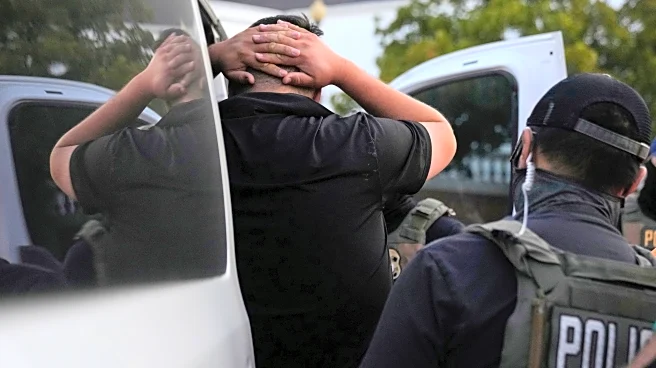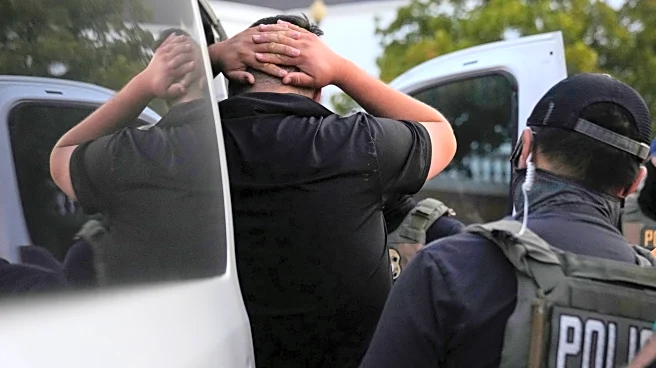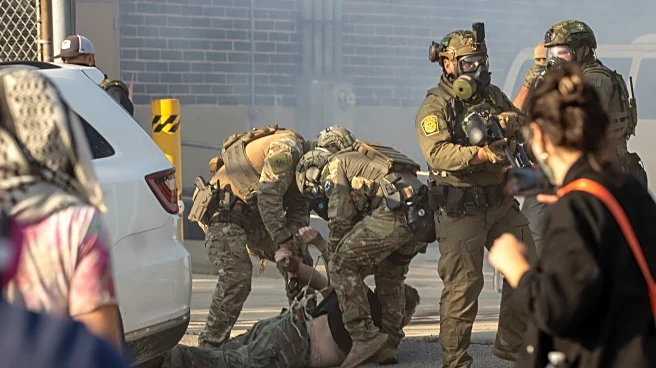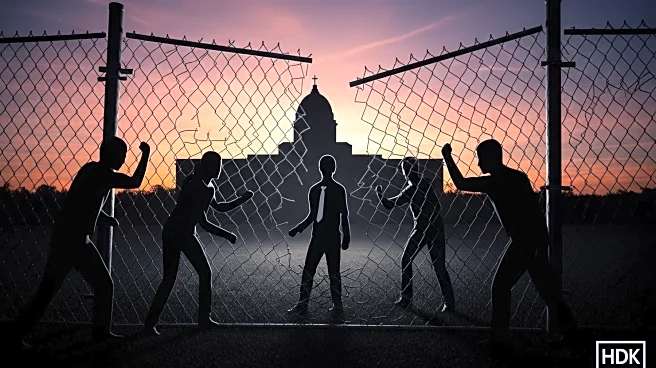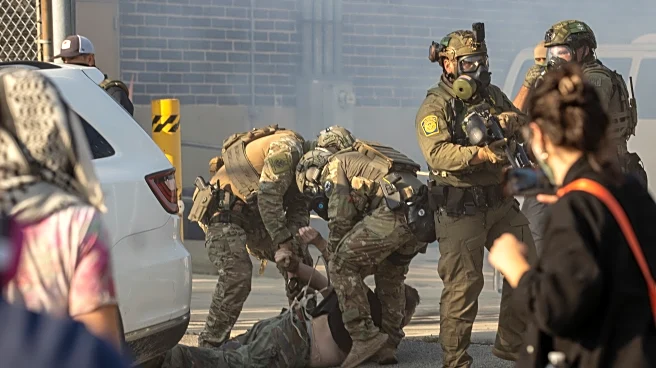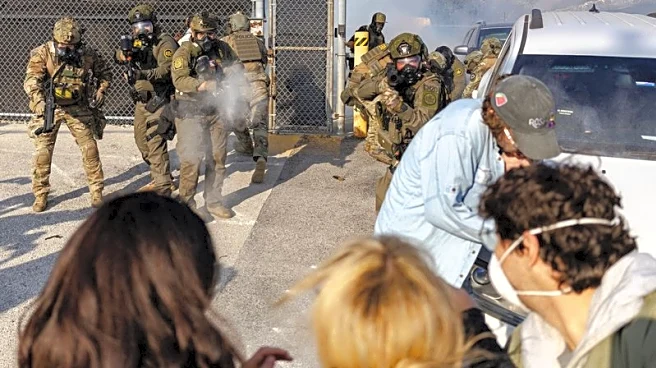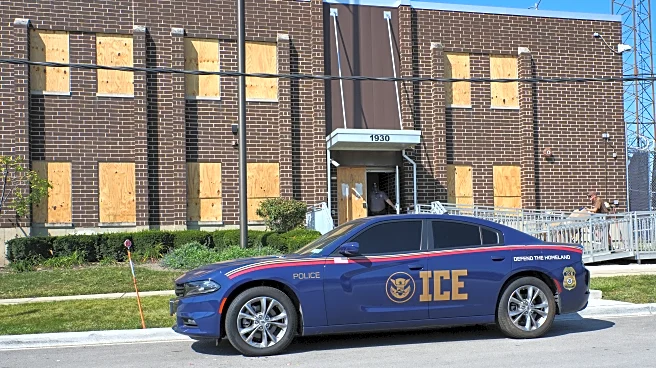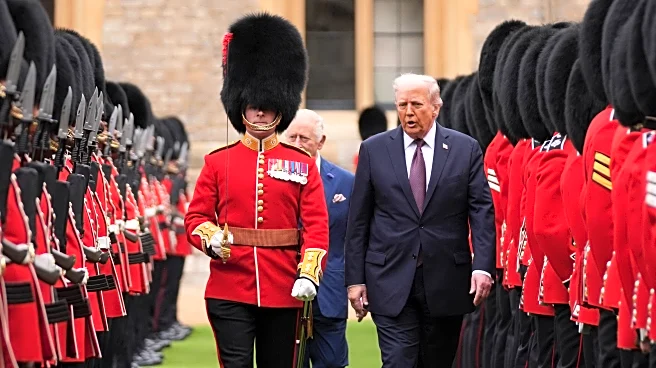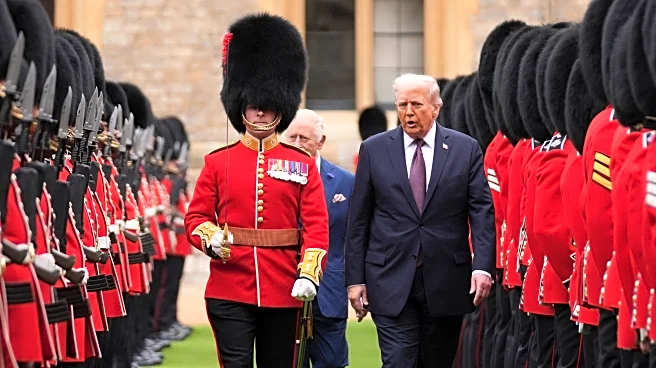What's Happening?
Federal law enforcement agents used tear gas and pepper balls to disperse approximately 100 protesters outside an Immigration and Customs Enforcement (ICE) facility in Chicago. The protest, which included two Democratic congressional candidates, was part of a larger opposition to the ongoing immigration enforcement surge in the city, known as 'Operation Midway Blitz.' The facility has become a central hub for detention and operations during this crackdown. Protesters attempted to block government vehicles from entering and exiting the facility, leading to clashes with masked agents in riot gear. At least three protesters were arrested, and the Department of Homeland Security (DHS) has accused demonstrators of siding with criminal elements. The protest follows the fatal shooting of Silverio Villegas González by an immigration officer during a traffic stop in the area.
Why It's Important?
The protest highlights significant tensions surrounding immigration enforcement policies under President Trump's administration, particularly in Democratic cities like Chicago. The use of tear gas and arrests at the protest underscore the aggressive measures being employed by federal agents, raising concerns about civil liberties and the treatment of immigrant communities. The operation has already resulted in nearly 550 arrests, indicating a substantial impact on local communities and potential disruptions to families and businesses. Political figures, including Illinois's lieutenant governor and congressional candidates, have criticized the federal response, framing it as an abuse of power and an attempt to silence dissent. This situation may influence public opinion and policy discussions on immigration enforcement and civil rights.
What's Next?
The ongoing operation, with no specified end date, suggests continued enforcement actions and potential further protests. Political leaders and civil rights groups may increase their advocacy efforts, seeking to challenge or modify federal immigration policies. The situation could lead to legal challenges or calls for legislative action to address the balance between enforcement and civil liberties. As the operation progresses, the response from local communities and political figures will likely shape the narrative and influence future policy decisions.
Beyond the Headlines
The protest and subsequent federal response raise broader questions about the ethical implications of immigration enforcement tactics and the role of federal agencies in local jurisdictions. The aggressive measures may contribute to a climate of fear and mistrust among immigrant communities, potentially affecting their willingness to engage with authorities or access essential services. Long-term, this could impact social cohesion and the integration of immigrant populations into broader society.

